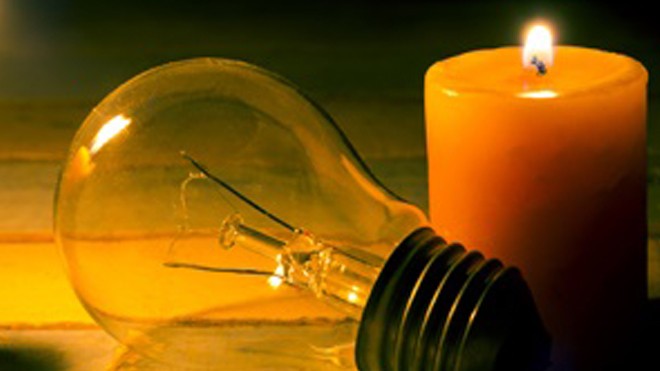
Can Pakistan’s electricity woes be solved? No. The situation is far more complex

While the PML-N has narrowly escaped the Panama papers verdict, it now has to contend with the Joint Investigation Team (JIT), which has been tasked to report its findings within 60 days of its formation. Even if the ruling party manages to escape this sword of Damocles, there is yet another hurdle it must jump over, if it wants to secure a second term in power.
Electricity. More specifically, the lack of it.
And there’s no apparent end in sight. However, solving the crises of electricity and loadshedding were cornerstones of the PML-N’s electoral promises that brought them into power in 2013.
Once seated, the PML-N continued to promise us heaven.
Chief Minister Punjab Shahbaz Sharif said on July 12, 2014 that loadshedding would end in 2017. Next year, on the first of July, Prime Minister Nawaz Sharif said it was the government’s top priority to end loadshedding by 2017. And in March 2016, Maryam Nawaz claimed that Pakistan would have surplus energy, again by 2017.
Year 2017 is well and truly underway, but there’s no light on the horizon.
Last Wednesday evening, Federal Minister for Water, Power and Defense, Khawaja M. Asif tweeted that as at 8pm on the April 26, the power situation was as follows:
Demand: 17961 MW
Generation: 14296 MW
Shortfall: 3665 MW
Unscheduled loadshedding: 0
Recently, the Bhikki Power Plant has come online, promising to add 717 MW into the national grid in the first phase. And later in November, when a steam turbine is added, the plant’s output will be ramped up to 1180 MW.
At the same time, a number of electricity generation products are expected to come online in 2017, under the life-changing China Pakistan Economic Corridor. A 1320 MW coal fired plant in Sahiwal is expected to begin energisation in May, and two wind farms, both in Jhimpir, Sindh are expected to add another 150 MW into the grid.
Going by the power minister’s figures, the addition of these precious mega watts should bring the shortfall to a manageable 2195 MW.
"The addition to generation capacity is not in line with the increase in demand," says Syed Tanzeem Husain Naqvi, former chairman of Karachi Electric Supply Company (KESC). "What the government does is increase generation in small spurts, 200, 300, 400 MW which cannot even make up the last year’s demand."
According to Naqvi, what the government needs to do instead, is every few years, bring projects with larger generation capacity online, between 4,000 and 5,000 MW so that it cannot only cover the existing shortfall, but also cater to a 10 per cent yearly increase in demand.
However, Pakistan’s electricity crisis is not a generation problem alone. "We need to upgrade the system by which electricity reaches the consumer," adds Naqvi. "This includes transmission lines and grid stations."
Earlier in the month, Minister of State for Water and Power Chaudhry Abid Sher Ali said that the transmission lines of the Lahore Electric Supply Company (LESCO) had been upgraded with an investment of Rs13 billion, with a 274km new transmission line laid down, capable of transmitting an additional 2,310 MW electricity.
Naqvi gives an example. "Newly produced additional electricity travels on newly laid transmission lines which can handle the additional load, but when they get to another grid station where the lines have not been upgraded, they start tripping and break." He adds, "Along with the transmission lines, the transformers at grid stations also need to be able to handle the additional load, failing which they will, in the worst scenario, explode, shutting the distribution system down."
Let’s assume, in an ideal world, generation capacity has increased to meet additional demand, and transmission lines and transformers have been upgraded to carry new load, can Pakistan’s electricity woes be solved?
The short answer is no. Behind every business is a trail of money. And a major portion of Pakistan’s electricity woes begins and ends with it.
"The government has notified a tariff that is below what is known as the recovery rate," says journalist Khurram Husain. "So even if they manage to make a 100 per cent recovery, they will still not be able to cover the cost of generation."
What the government does, to plug this gap, is announce a subsidy. "For at least the last one year, the government hasn’t had the money to pay this subsidy, so it’s piling up," he says. What happens next is that the power purchaser, the Ministry of Water and Power, cannot pay the generators whom they buy the electricity from -- this is where the circular debt comes from.
At the other end of the spectrum, the distribution companies themselves suffer high losses, which are due not only to an aging transmission system but also rampant theft of electricity -- they are unable to bill much of the electricity that they send out. "Because of this gap, distribution companies are not able to generate the cash flows they need in order to pay for their power purchases," says Husain. "The power outages that we are seeing across the country are not the result of insufficient generation, but because of the inability to pay for the electricity which is in the system."
As stated earlier, a new 274km transmission line has been added for Lesco. Is the government doing anything to handle the financial side of the energy crisis? Again, the answer is no. "The government has had three years in which to do something about it, but they haven’t," adds Husain. "Their inability to act on that front is catching up on them."
As the 2018 elections draw nearer, the government will make sure to toot their own horn about adding so many megawatts into the national grid, bring so many new projects online. But the proof is in the pudding -- in this case, the light bulb: there’s no light on the horizon.